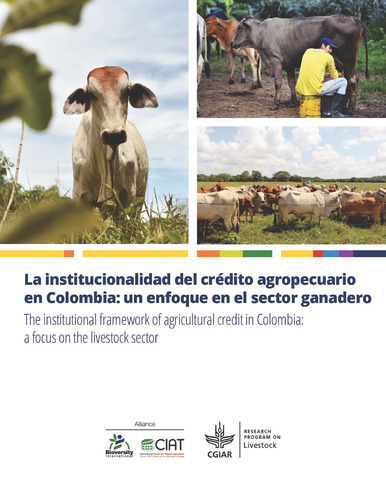La institucionalidad del crédito agropecuario en Colombia: un enfoque en el sector ganadero
When examining the growth factors of the Latin American economies, it is observed that the promotion of rurality through agricultural production appears as a necessary condition. This is essential, not only because of its direct effects on food supply or job creation, but also because of its contribution to economic growth, its role in reducing poverty, inequality (IFAD, 2011) and environmental sustainability (Grisales, 2016). However, some data are in contrast to that: in recent decades, the participation of the agricultural sector in the total of economies has shown a decreasing trend across the globe. In the 1970s, the participation of this sector in GDP was significant in countries such as Colombia (30%), Brazil (20%) and Peru (19%). But already in 2009, its relevance was reduced, representing no more than 10% of the average production value of Latin American economies (Fernández et al., 2011). This scenario could be paved by the liberalization policies applied since the early 1990s, which mainly favored a limited number of large companies that were organizing themselves in value chains, leaving out a considerable number of small and medium producers, thus deriving in the wastage of the comparative advantages that would promote the participation of this sector in national production and, consequently, in profound socioeconomic consequences for the rural population (FAO, 2013).
In Colombia, agricultural credit has not been immune to such dynamics: it has influenced the attenuation of this reality, and at the same time, it has been affected by the constant reforms. Although the participation of the State continues as a constant, the process of development of the credit institutions has obeyed the spirit of productivity and competitiveness, leaving aside many of the criteria in the long term. In short, these are processes that have historically influenced each other in multiple ways, and are both causes and consequences of structural and rural changes in Latin America (IFAD, 2016). These changes reveal a feeling of discomfort due to the conditions of agricultural activities, which are manifested mainly in the low technification of agriculture that generates an underutilization of land with agricultural potential, and in the high levels of poverty and social inequality. Despite progress in reducing the latter, the region continues to have the most regressive income distribution on the planet (FAO, 2013).
But agricultural credit, in turn, and in the company of other political and economic elements, can be a useful tool to promote innovation, improve the allocation of resources and, properly directed, can contribute to reducing the gaps between companies, generating a cycle of economic prosperity (Abedullah et al., 2009; De la Vega et al., 2014; Echavarría et al., 2018). How has the Colombian agricultural credit system been affected and how has it intervened? A synthesis is provided by Estrada and Sandoval (2014) in their analysis of coffee credit. These authors affirm that credit is understood as a useful instrument to stimulate profitable activities, but it does not solve economic problems of a structural nature or replace a social policy. On both sides there are arguments that blur any attempt at a balance sheet. This is why the present work has been proposed to analyze the dynamics that shaped the current situation of agricultural credit.
The objective of this study is to know what are the characteristics and responses that the system has had in the face of conjunctural processes, as well as to understand the processes of change derived from such situations. The aim is to break down the diversified portfolio of instruments that have been built in recent years and analyze their behavior. This also includes to review the barriers that prevent the credit system from having a greater reach among small producers in the most remote areas of the country. The study presents a central emphasis on livestock activity and its intricate path to sustainability. Its importance is indisputable: in terms of the annual value of production, livestock is equivalent to 3 times the coffee sector and about eight times the palm sector. It is the economic activity with the most presence in the Colombian countryside and contributes 1.4% of national GDP and generates around 6% of national employment (Fedegán, 2018). In turn, it is the agricultural activity with the highest occupation of the national territory and is considered one of the current drivers of deforestation in the country. These conditions reflect the low productivity of the livestock sector and are in turn a symptom of the need to generate investments in infrastructure and technologies (e.g. improved forage seeds).

